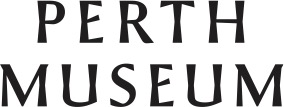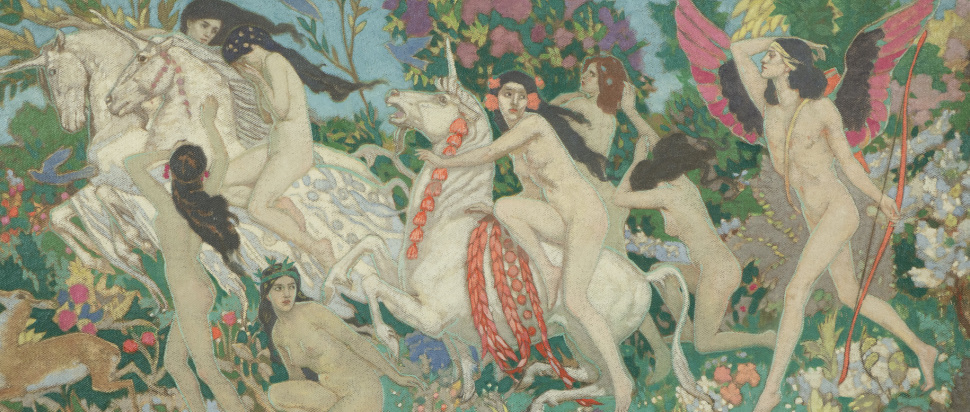Remaking Myths: Unicorn at the new Perth Museum
The new Perth Museum opens with an exhibition celebrating Scotland’s national animal, the Unicorn, including six new commissions by queer artists exploring the unicorn's significance to the LGBTQI+ community

Scotland is a nation enthralled with myths and legends. One mythical creature that seems to enchant us more than most is the unicorn. We long ago adopted this magical horned horse as our national animal, and its significance to Scottish culture, from antiquity to the present day, is rich and multivariate.
Unicorn, the debut exhibition at the new Perth Museum which opens its doors this month after a £27 million redevelopment, takes a deep dive into this national obsession. Featuring objects and artworks from across the world, the exhibition explores the unicorn in relation to art, science and popular culture. One of its most exciting aspects is Hunting the Unicorn – a series of specially commissioned artworks exploring the unicorn as a modern symbol of the LGBTQI+ community. The museum has invited six queer artists to create work for the series, with the proviso that they use a blank life-sized horse head as their creative canvas, which they are free to modify in any way that serves their concept.
Edinburgh-based artist Alex Hayward tells us that he wanted to explore the issues that face LGBTQI+ people living in rural areas. “From open prejudice, violence, and abuse, to microaggressions and oblivious ignorance, rural queerphobia can culminate in queer people feeling isolated, othered, or targeted by their local community,” Hayward tells us. “I now live in the city but am conscious of the tendency to regard queer culture as primarily urban. For the countless Dorothys who don’t or won’t have the opportunity or desire to relocate, Kansas must be a safe and fulfilling place for them.”
To explore these issues, Hayward has incorporated the unicorn into a sign he’s designed for an imaginary village called 'Kiljessie'. Below this sign, Hayward will install a village notice board, but viewers will quickly realise that what little is going on in this sleepy village doesn’t cater to its queer community. “It is essential to direct all viewers, regardless of their own identity and circumstance to consider these notices from the perspective of a possibly vulnerable rural queer person,” says Hayward. “I hope it’s a success.”
The commission from Kathryn Hanna, a socially engaged sculptor and environmental artist based in Glasgow, is concerned with horrific stories of conversion therapy. “The UK Government has not taken a strong stance on conversion therapy,” Hanna tells us. “At one point plans [to ban conversion therapy] were scrapped entirely... these plans were then reintroduced but they did not safeguard trans people. Even now, the government may still allow forms of conversion therapy to take place in faith-based settings due to concerns of some religious groups who state a ban would infringe on traditional religious practices.”
Hanna’s Hunting the Unicorn commission adds a horn, cold-cast from jesmonite, to the life-sized horse head, before deconstructing the horse head by slicing parts of the face away. “This act of slicing is indicative of the abusive practices carried out during conversion therapy, which causes life-long lasting psychological harm,” she says. “Through the simple act of mutilating the form, I believe the artwork can harness its poignant and bold statement while being easily understood by all visitors to the new Perth Museum.” The unicorn head is also adorned with a stole, reminiscent of the shoulder vestments worn by priests.
Ciaran Cannon is a Glasgow-based artist whose work often explores the insubstantiality of gender through found and salvaged materials and objects. His Hunting the Unicorn commission builds on this practice, and hopes to be a rebuttal to recent comments by leading politicians who have fanned the flames of prejudice against the trans community, behaviour that he calls “a cynical attempt to unite the general public through preying on their fear.”
Cannon hopes to “highlight the insubstantiality” of conceived gender categories. “I hope this will raise awareness of the issues being faced by the queer community and provoke meaningful discussion around the nature of identity and societal norms,” he says. By using found metal objects assembled at the Glasgow Sculpture Studio, Cannon will create a wall that his unicorn appears to be striding through. “There is a sense of freedom as the unicorn steps gracefully through any barrier,” he says.
For Cannon, freeing these scrap metals from their previous functions is an expression of the freedom and joy of the genderqueer community exploring and expressing themselves openly. “These [metal objects] were intended for something different, but now they are taking back ownership over the form. My art does not suggest there is no form; rather that it is contextual, fluid and subject to change in response to the conditions of the universe, and is far more mysterious than our societally constructed boundaries allow space for.”
These three artworks, along with commissions from artists David Hutchison, Francis MacLeod and duo GAINAGAIN, will be on display at Perth Museum as part of the Unicorn exhibition from 30 March to 22 September. For more information about the Unicorn exhibition and to buy tickets, head to perthmuseum.co.uk/inside-the-museum/unicorn. Happy hunting!
To celebrate the opening of the Unicorn exhibition, we have two pairs of exhibition tickets and two Perth Museum special edition bottles of Dewar's 15 Year Old Blended Scotch Whisky to give away – click here for full details and to enter our competition
